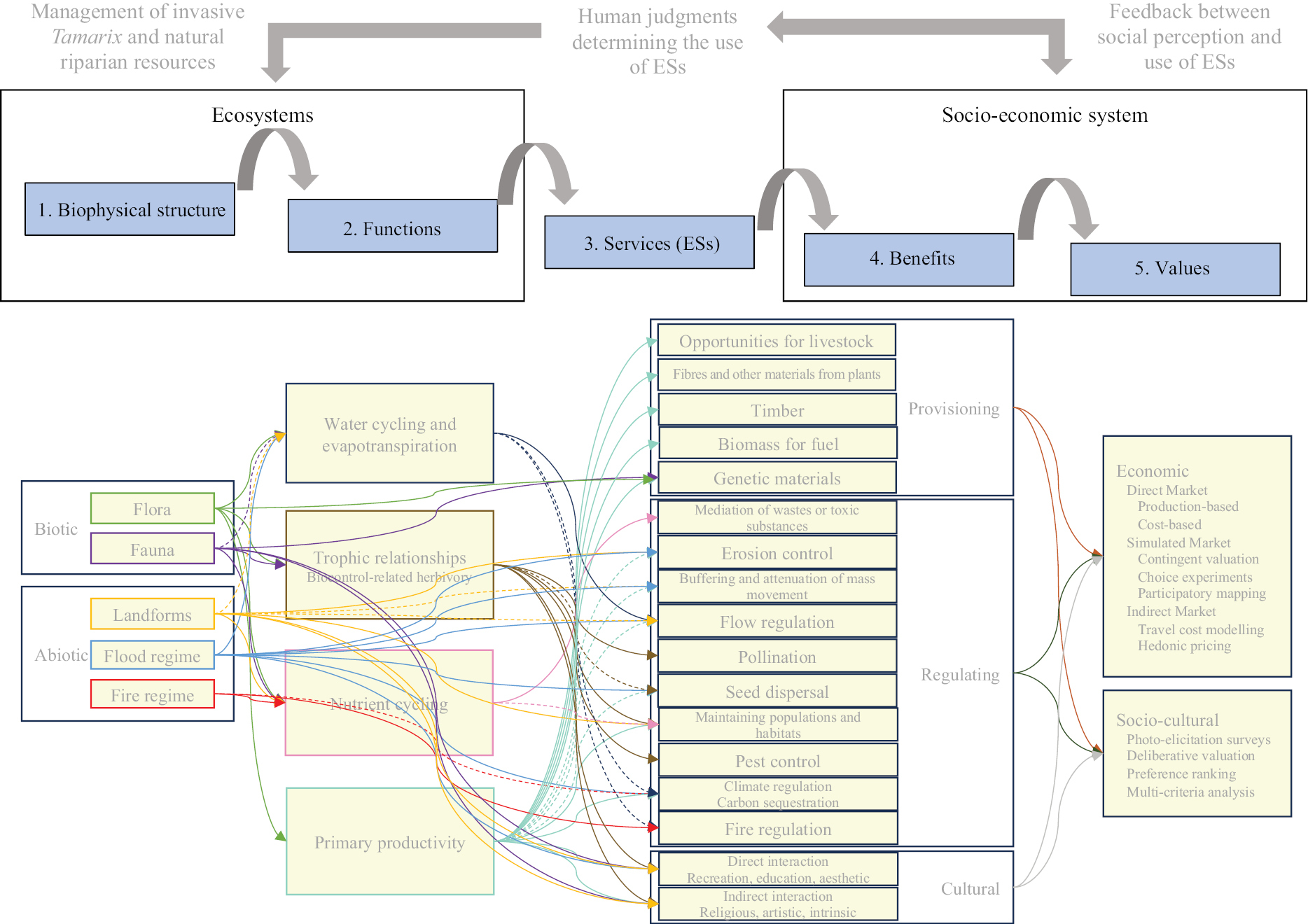
|
||
|
Ecosystem service cascade model of Haines-Young and Potschin (2010) adapted to represent a conceptual framework that integrates socio-economic factors into Tamarix control monitoring across U.S. Southwestern rivers. Blue boxes represent the five steps of the model. Processes were considered conjointly with functions (step 2) instead of as part of biophysical structure (step 1) as in the original design. Yellow boxes include elements that can be used to develop the model steps for the Tamarix case. For an in-depth development of biophysical structure indicators, see Goetz et al. (2024). We have combined the elements associated with ecosystem services (ESs) (step 3) and benefits (step 4), given that they overlap considerably and to simplify the figure. Arrows reflect linkages between ecosystem structure, functions, ecosystem services/benefits, and values, based on our best judgment. Suppl. material 1: appendix S1 provides a list of references studying the functions of water cycling and evapotranspiration and biocontrol-related herbivory (trophic relationships). Suppl. material 1: appendix S2 includes an extended list of ecosystem services and benefits provided by systems dominated by Tamarix and replacement vegetation such as native riparian forest and meadow vegetation that follows the CICES v.5.1 classification (Haines-Young and Potschin 2018). Suppl. material 1: appendix S3 describes economic valuation methods. |